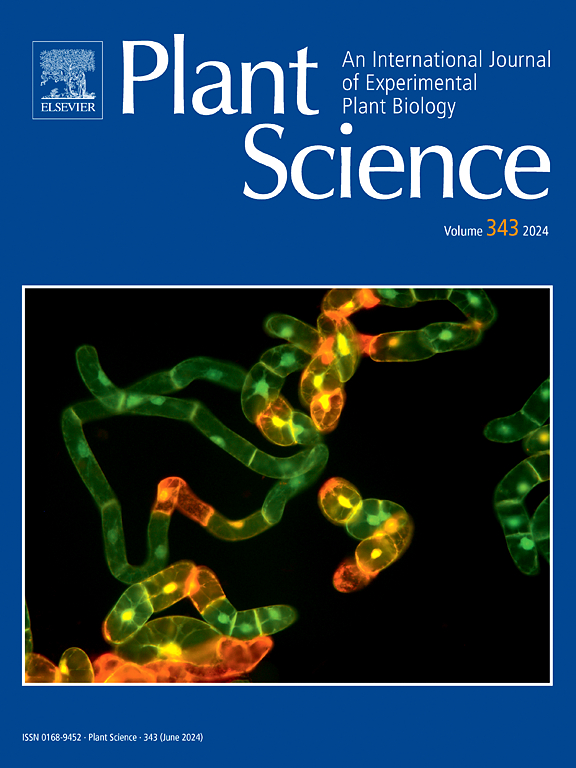Extracellular ATP activates H2O2 signaling to mitigate cadmium toxicity by restricting Cd2 + entry and triggering the antioxidant system in Arabidopsis
IF 4.2
2区 生物学
Q2 BIOCHEMISTRY & MOLECULAR BIOLOGY
引用次数: 0
Abstract
Extracellular ATP (eATP) has recently been considered important in signaling against abiotic stress in plants. However, the potential advantageous mechanisms of eATP in a plant's adaptation to cadmium (Cd) stress are largely unknown. In the present study, using eATP-insensitive mutants, does not respond to nucleotides 1–3/4, we investigated the possible roles and regulatory effects of eATP in mitigating Cd2+ toxicity in Arabidopsis thaliana. The results show that dorn1–3 and dorn1–4 possessed lower germination and root length, but exhibited higher relative electrolyte leakage than those in wildtype (WT) under Cd stress. In addition, CdCl2 caused a marked trend of first increase and then decrease in eATP within the three strains during 24 h of treatment. The Cd2+-induced Cd2+ influx in the roots of dorn1–3 and dorn1–4 was notably higher than that in WT, whether in steady or in transient states. Additionally, the application of exogenous ATP-Na2 (an eATP donor) reduced but exogenous PPADS (a specific inhibitor of P2K1) increased the Cd2+-elicited Cd2+ influx. The fluorescence intensities of Cd2+ and H2O2 in the mutants were also notably higher than those in WT. Furthermore, H2O2 signaling could be activated via eATP signaling and inhibit Cd2+ intry under Cd conditions. Under Cd stress, eATP-triggered H2O2 signaling seemed to activate the downstream transcription of genes involved in the antioxidant system, such as AtGR1, AtCAT1, AtGPX8, and AtSOD1/2, and downregulate the relative levels of AtIRT1 and AtIRT2 transcripts. To sum up, through binding to its receptor, P2K1, the Cd-elicited eATP potentially activated the downstream signal H2O2, which could further inhibit Cd entry by downregulating the expression of AtIRTs and remove excess ROS via upregulating genes involved in the antioxidant system, eventually leading to the mitigation of Cd toxicity.
求助全文
约1分钟内获得全文
求助全文
来源期刊

Plant Science
生物-生化与分子生物学
CiteScore
9.10
自引率
1.90%
发文量
322
审稿时长
33 days
期刊介绍:
Plant Science will publish in the minimum of time, research manuscripts as well as commissioned reviews and commentaries recommended by its referees in all areas of experimental plant biology with emphasis in the broad areas of genomics, proteomics, biochemistry (including enzymology), physiology, cell biology, development, genetics, functional plant breeding, systems biology and the interaction of plants with the environment.
Manuscripts for full consideration should be written concisely and essentially as a final report. The main criterion for publication is that the manuscript must contain original and significant insights that lead to a better understanding of fundamental plant biology. Papers centering on plant cell culture should be of interest to a wide audience and methods employed result in a substantial improvement over existing established techniques and approaches. Methods papers are welcome only when the technique(s) described is novel or provides a major advancement of established protocols.
 求助内容:
求助内容: 应助结果提醒方式:
应助结果提醒方式:


